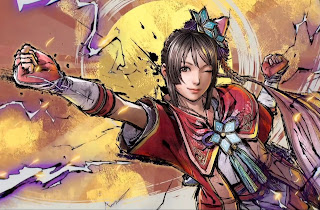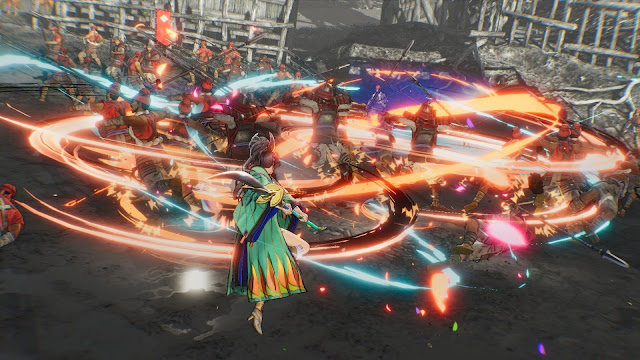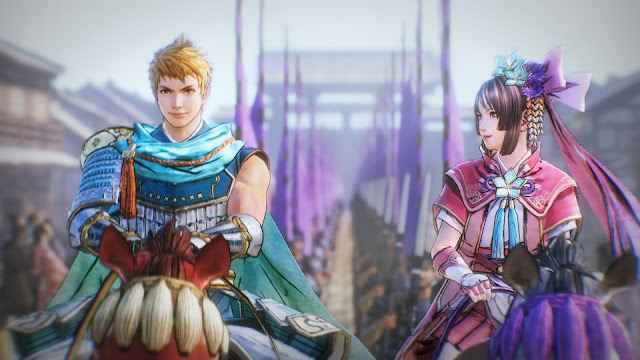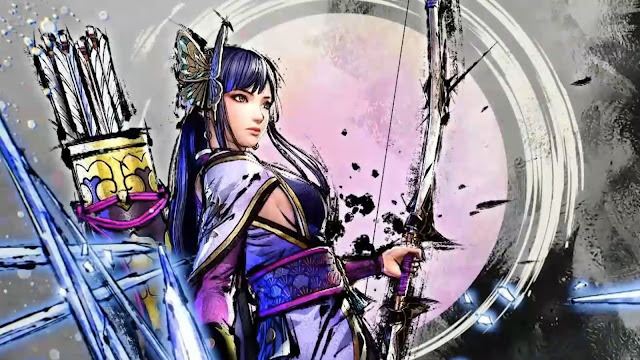Samurai Warriors 5 is exactly what Koei Tecmo needed to do with their venerable series. It balances out every quality that fans have come to love about the series, while restructuring it in a meaningful manner. It offers a slice of historical drama (deeper than we’ve seen in previous Samurai Warriors titles), along with slick action (the best we’ve seen in the series), and an expansive roster of characters to play as (fewer than in some previous Samurai Warriors titles, but each adds more to the overall than some of the superfluous characters in previous titles have offered). All brought together this is a more refined, nuanced, and impactful Samurai Warriors, and it’s nothing short of brilliant.
Previous Samurai Warriors titles have been expansive in scope but struggled to actually do any of it justice. I love those games, but the developer was trying to tell the stories of dozens of different characters, who all operated in different parts of Japan, over generations of warfare. Consequently, any single character’s narrative arc in those earlier titles could only possibly encompass a small handful of stages, and there’s only so much of their story that can be packed into that. The only solution was for the characters to be reduced to caricatures, exaggerated to the extreme just to pack as much of their dominant character qualities in (and what history remembers them for), to make up for the lack of runway to work with.
Make no mistake, this is pretty brave stuff by Koei Tecmo. Samurai Warriors has previously done its utmost best to make sure that every character is heroic in some way or another. Over with the sister Nobunaga’s Ambition strategy series, the company has likewise aimed to be as dry as possible, providing near-encyclopedic retellings of events to keep the focus on the strategy. But here, with this one, the creators are absolutely presenting a proper and nuanced interpretation of the characters. It’s light-on, don’t get me wrong, but there is some clear historical analysis happening in this game, and I hope it generates some conversations about how the team has done that by people that enjoy the history side of things. It’s worth talking about.
The other benefit to this approach that the developers have taken is that there’s room for smaller battles in Oda & Akechi’s stories, and that means the big ones have better gravitas. For example, in most Samurai Warriors titles, Oda’s story kicks off with the Battle of Okehazama, which therefore becomes an incredibly easy “tutorial” affair. It’s great fun (if only because it also becomes the first experience with Oda in each game), but it also becomes disappointing on future replays. The real Battle of Okehazama was a tide-shifting victory for Oda and very close to Sekigahara itself as the most important battle during the entire period. In Samurai Warriors 5, rather than being an almost throwaway tutorial, there’s a genuine build-up to that battle. It’s still one of the easier ones in terms of the difficulty setting, but the half dozen or so battles leading up to it (including one that involves a loss to the Imagawa – Oda’s opponent at Okehazama) makes this title’s take on Okehazama feel like the meaningful moment that it was.
Some people will look negatively at the roster, which has lopped off a number of well-loved characters (or relegated others to non-playable status), but this was necessary as a narrative consideration, given that there were a number of heroes in previous Samurai Warriors titles that Oda and Akechi had minimal contact with (if any at all). Koei Tecmo has beefed up the roster in other ways, though. Saitō Dōsan and his son finally get to play a role as the first stepping stones on Oda’s journey into legend. Sena, Imagawa’s niece, makes sense to this game, so she comes in where Ina, Honda Tadakatsu’s daughter, no longer makes sense (side-note: Sena’s pretty, too). And Yasuke, the beloved “black samurai” from Africa, gets to finally make his first appearance in Samurai Warriors because his story is exclusively related to Oda’s, and not the broader Sengoku period. And so on. This too is relatively brave by Koei. At a time where game development is all about delivering endlessly escalating content, to be willing to step back, say “no, this character doesn’t make sense to what we’re doing,” and subsequently cut them takes a real willingness to deal with a “fan” backlash. With that being said the roster is still massive, so anyone who does complain about a missing character or two is being petulant, and I say this as a hardcore Ginchiyo Tachibana fanboy (she didn’t make the cut, of course, because she was on the furthest corner of Japan away from Nobunaga throughout his career).
Of course, all of this wonderful characterisation, setting and historical context would be for naught if the game didn’t play well. We’ve seen plenty of Warriors games in the past capture the spirit of history and offer fun characters, only for the game itself to get slammed for not fitting in the narrow confines of what a brawler is allowed to be. Samurai Warriors 5 deserves to be critically lauded just for the way it plays. It is snappy, varied, and a lot of fun to toy around with. The range of weapons is solid, without the game indulging the more ridiculous end of weapon types that have appeared in some Warriors games in the past. Interestingly, characters can use any weapon that you want them to use (particularly handy if your favourite character happens to use a weapon that you hate), but each character gets a special move boost from having their “preferred” weapon equipped. That’s not essential for getting through the stages, though. There’s more than enough in terms of normal, special and hyper-attacks to plough your way through the hordes with any weapon paired to any character. Koei has just found a really nice way of balancing out flexibility with the creative decisions behind giving specific weapons to specific characters.
Another nice touch is that you’ll get to enjoy a number of battles from different perspectives – you can play the Oda or Akechi version of many stages, and that can give you two very different views regarding what a battle is about and how it was fought. Not only is this an enjoyable way to go back and replay previous battles but from an entirely different angle, but is another really nice narrative touch from Koei Tecmo, too. The way that these characters are presented in battle goes a long way to establishing their characters and, again, explaining their broader motivations. In battle, it’s a traditional Warriors experience – complete a checklist of objectives while darting across the battlefield to either lead the charge on the enemy or defend a desperate situation, as the flow of the battle depends. Battle environments themselves are both large and filled with variety, making each of them a joy to move through, and as a nice touch, being successful or failing at certain objectives can actually affect how you can move about the battlefield – you might suddenly find that pathways are closed off to you, for example. This encourages you to pay very close attention to the context of the action as you play, though Koei Tecmo has done a good job in using those objectives to subtly drive you around the battlefield in the right way anyway.
Outside of the game’s main narrative mode, you get the usual bevvy of activities to undertake. You can upgrade your weapons and horses so that your favourite characters are even more fearsome on the field of battle, and each warrior has their own RPG-like skill tree which will take a lot of grinding to fill up. Most of that grinding will be done in a secondary mode, where you participate in narrative-unrelated battles for additional materials and rewards that you can use to upgrade your castle – another system that provides yet more battlefield benefits. To be honest, I found this to be the least appealing “secondary gameplay mode” that I’ve experienced in a Warriors game to date, but the story mode was so comprehensive and meaty I certainly didn’t feel short-changed from my time with Samurai Warriors 5.
As one final note, I love what the developers have done with the art here. The cel-shaded character graphics might, at first glance, seem to be a strange step away from “historical authenticity” in comparison to previous Warriors titles, but the characters are actually less outlandish now. This simply looks like a talented manga artist is aiming to retell the Sengoku story in a reasonably natural way. Those in-game cel-shaded beauties are backed up with some sumi-e (Japanese ink painting) aesthetics to highlight key backstories, cut scenes, and special attacks finishers, and those things are hang-on-the-wall good. For so long the presentation of Samurai Warriors has been a combination of functional art and character caricature, but here, in this one, it’s more nuanced and evocative of the Japanese culture and artistic tradition. It’s beautiful.
Samurai Warriors has been one of the most precious things to me for years now. Not only have I loved the games themselves, but they’ve led me to another passion in Japanese history, and given me ideas for things to do while travelling across Japan that I would never have had otherwise. As it turns out, travelling to old battleground sites and Sengoku-era castles really is a great tourism activity. Samurai Warriors 3 was the start of all that and, with Samurai Warriors 5, Koei Tecmo has produced its finest effort yet. I would be incredibly surprised if this doesn’t inspire a lot of people to go out and learn more about one of the most fascinating periods of warfare, contested by some of the most fascinating individuals that the world has ever seen.
– Matt S.
Editor-in-Chief
Find me on Twitter: @mattsainsb











